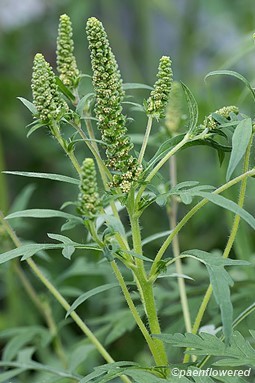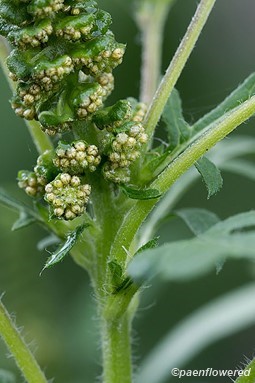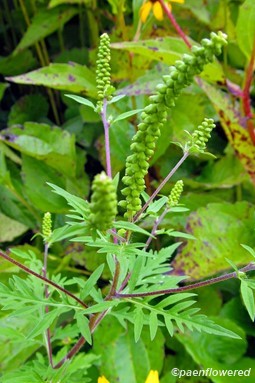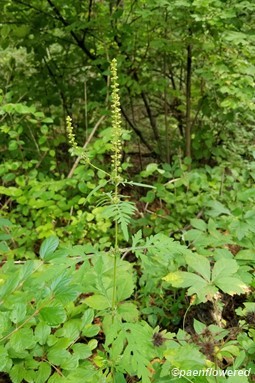Ambrosia artemisiifolia
Inconspicous ragweed that tends to cause allergies
Ambrosia artemisiifolia annual ragweed
If you have late summer or fall hay fever allergies, this is the plant that is the most likely cause. It is not a very showy flower at all since it has green, inconspicuous flowers that nod downwards from a tall spike. Most people have heard of it, but it seems that many do not recognize it and blame other plants for their nasal woes. Goldenrods are falsely blamed because they are more visible and bloom about the same time of year, but it is the unattractive ragweed that releases billions of tiny yellow pollen grains into the wind during this season.
Ragweed is a member of the aster family and has deeply lobed leaves. It is a tap-rooted annual plant, growing each year from seed. It produces hundreds of small male flowers on tall flower stalks. As in all members of the aster family, the flowers are composites. In this case, each flower head is made only of disc flowers; there are no apparent 'petals' or ray flowers. Separate female flowers are borne in the axils of the lower leaves. These are not visible in this photograph and are often overlooked.
The common ragweed blooms from August to October and is found throughout North America. It can be seen on roadside, fields and dry waste areas. It can be a very aggressive agricultural weed that can choke outcrop plants if not controlled. It has become an invasive weed in Europe and Japan. The small seeds are retained on the plant over the winter and are eaten by songbirds.
Habitat & Range
Common in fields, meadows, cultivated sites, along roadsides.
Present throughout the state.
| EMP: | FACU |
|---|---|
| NCNE: | FACU |
Phenology
Flowers August to October.
Plant Codes
S-rank: No rank
G-rank: G5 (Secure)








Comments
Have you spotted this plant in your area? We'd love to hear about your experience! Share your comments or questions about the plant below. Comments are moderated before posting.